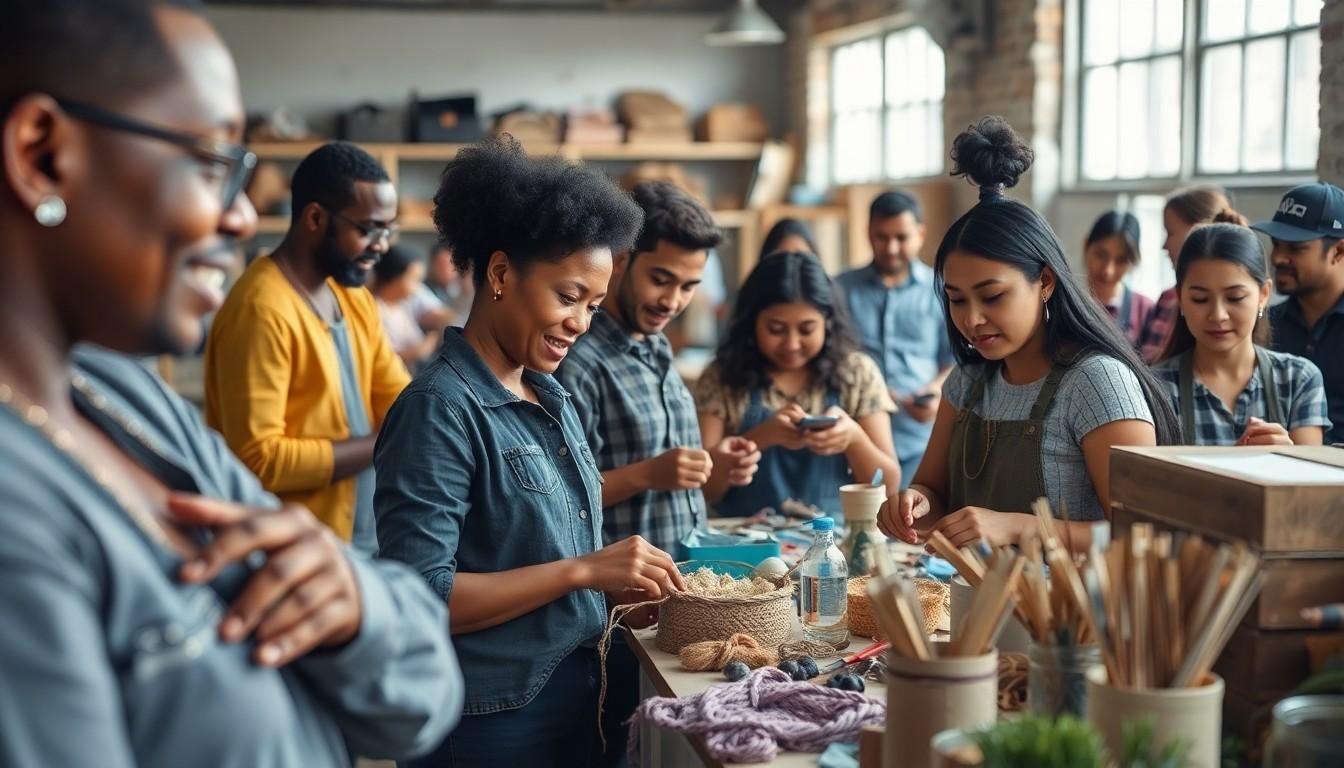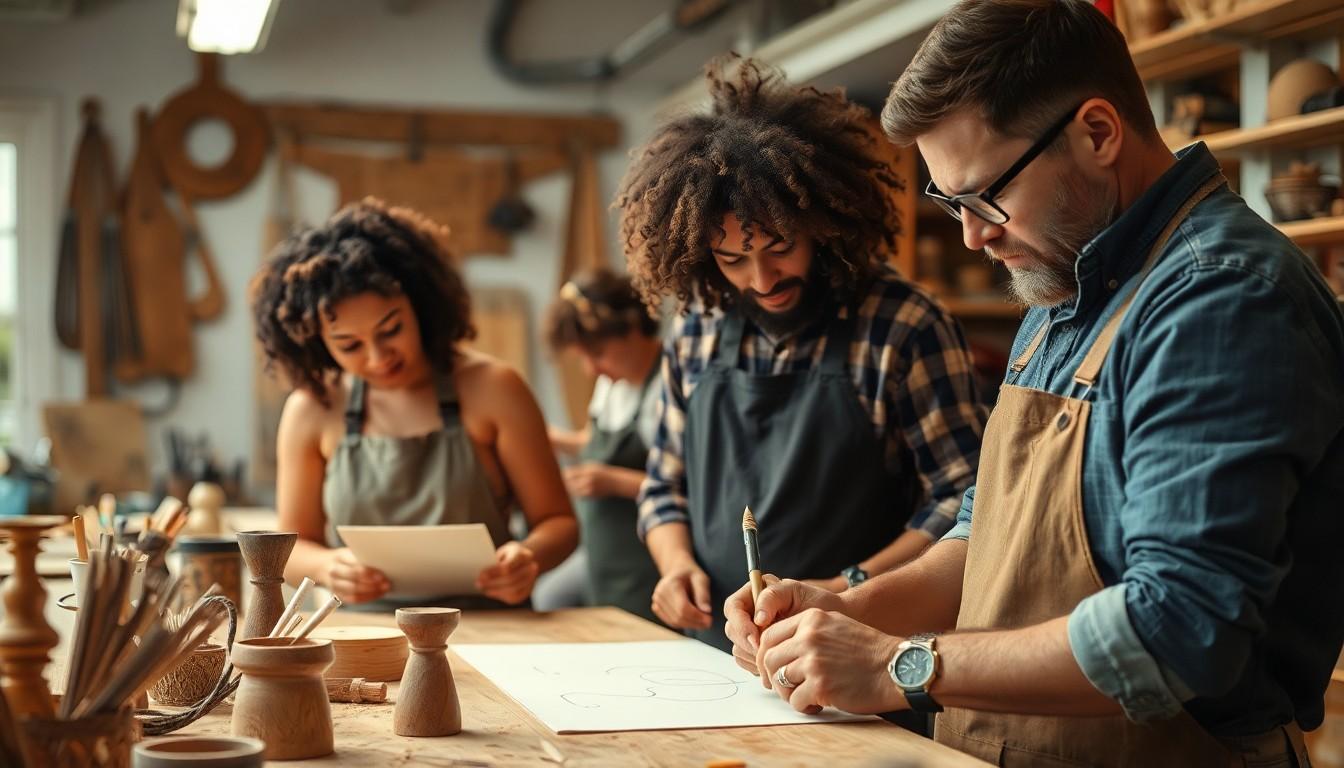In a world where mass production reigns supreme, community manufacturing is shaking things up like a toddler with a paintbrush. Imagine local artisans and makers banding together to create unique products right in their neighborhoods. This isn’t just a trend; it’s a revolution that’s turning the tables on traditional manufacturing and giving the power back to the people.
By tapping into local talent and resources, community manufacturing fosters creativity and innovation while reducing the carbon footprint. It’s like having a potluck dinner where everyone brings their best dish—only instead of food, it’s a feast of craftsmanship and ingenuity. As communities unite to produce goods that reflect their identity, they’re not just making products; they’re building connections. So, buckle up and prepare to dive into the delightful world of community manufacturing, where every item tells a story and every maker has a mission.
Community Manufacturing
Community manufacturing harnesses the skills of local artisans and makers to produce unique products. This collaborative approach emphasizes creativity and craftsmanship over mass production. Many individuals participate in this movement, transforming their ideas into tangible goods that reflect local culture and identity.
Collaboration among makers fosters a nurturing environment where innovation thrives. Emphasis on sustainable practices arises as products often utilize locally sourced materials. Environmental consciousness plays an integral role in community manufacturing, significantly reducing the carbon footprint associated with traditional manufacturing methods.
Each product tells a story, showcasing the maker’s dedication and heritage. The process not only builds individual brands but also strengthens local economies. Communities benefit from increased employment opportunities as artisans gain recognition and support.
Online platforms facilitate connections among makers and consumers, creating new market opportunities. These tools allow small-scale productions to reach a broader audience, providing an avenue for growth. As local economies flourish, the impact of community manufacturing extends far beyond individual success, promoting resilience and sustainability within neighborhoods.
Community manufacturing encourages an inclusive approach, inviting diverse voices to participate. Through workshops and local events, knowledge and skills are shared among participants. Engaging with the community not only boosts creativity but also enriches social bonds, reinforcing the idea that manufacturing is a collective effort. Each initiative contributes to a larger narrative of innovation and community empowerment.
Benefits of Community Manufacturing

Community manufacturing offers several significant advantages that extend beyond the products created. The economic and social impacts are especially noteworthy.
Economic Impact
Community manufacturing boosts local economies directly. Increased demand for locally made products creates employment opportunities, investing in neighborhoods and supporting artisans. Small businesses flourish as unique items draw consumer interest, leading to higher sales and sustainable growth. The reliance on local materials decreases transportation costs and enhances supply chain efficiency. Local consumers exhibit loyalty to nearby makers, fostering a sense of community while promoting fairness over large corporate profits. This shift positively affects financial stability, which attracts further investment and entrepreneurship.
Social Impact
Community manufacturing strengthens social ties within neighborhoods. Collaborative workshops and events encourage participation, inviting diverse talents from various backgrounds. Individuals connect through shared experiences, creating networks that support creativity and innovation. Community members often share stories behind their creations, instilling a sense of pride and ownership. The movement also emphasizes inclusivity, allowing voices from all walks of life to contribute. Enhanced interactions lead to improved trust and solidarity among residents, fostering a vibrant, resilient community narrative. This social cohesion reflects an overarching commitment to collective growth and empowerment.
Challenges in Community Manufacturing
Community manufacturing faces various challenges that impact its growth and sustainability. Addressing these issues is essential for maximizing its benefits.
Resource Allocation
Resource limitations pose significant challenges in community manufacturing. Local artisans often struggle with insufficient access to materials and funding sources. Competing priorities among community projects may further complicate resource distribution. Funding from local governments can be inconsistent, which affects production capabilities. Moreover, inadequate access to technology hampers innovation and efficiency. Mastering resource management remains crucial to fostering growth in this sector.
Community Engagement
Community engagement presents its own set of challenges. Encouraging active participation among diverse groups can be difficult. Often, the lack of awareness about community manufacturing limits involvement. Organizing workshops and events requires coordination and commitment from various stakeholders. Building trust within neighborhoods is essential but can take significant time and effort. Ensuring inclusivity in all activities strengthens community ties and boosts overall functions.
Successful Examples of Community Manufacturing
Community manufacturing showcases successful collaborations between artisans and local resources, resulting in unique products that reflect community identities. Here are two compelling case studies.
Case Study 1
In Detroit, a group of local artists formed the Detroit Design Network, focusing on creating sustainable home goods. Utilizing reclaimed materials, these artisans produced furniture and décor that celebrate the city’s rich industrial history. Collaboration among members enhances creativity and innovation, leading to unique designs that resonate with residents. The network not only revitalizes the local economy but strengthens ties between makers and consumers. Sales events and marketplaces promote local products, drawing in a diverse audience and showcasing the talents of Detroit’s artisans.
Case Study 2
In Portland, Oregon, the Crafty Wonderland initiative unites makers through pop-up markets and workshops. This platform empowers local artisans by providing opportunities to sell handmade goods directly to consumers. The initiative emphasizes community engagement and encourages participation from various backgrounds. Through workshops, participants learn crafting skills while fostering camaraderie among creators. Crafty Wonderland boosts the local economy by generating income for small businesses and fostering a sense of pride among community members. Each market celebrates craftsmanship, bringing together makers and residents in a vibrant, supportive environment.
Future of Community Manufacturing
Community manufacturing continues to evolve as new technologies and platforms emerge. Innovations in 3D printing enhance the ability of local makers to prototype and create products rapidly, transforming designs into tangible items with minimal resources. Customization becomes a prominent trend, as consumers seek unique products tailored to their tastes, inviting artisans to innovate continually.
Online marketplaces expand their reach, allowing local creators to sell products globally while maintaining community ties. By leveraging these platforms, artisans can access broader audiences, creating opportunities for partnerships and collaborations. Each connection strengthens local economies and cultivates a sense of belonging among makers and consumers.
Increasing awareness regarding sustainability drives another shift in community manufacturing. More consumers prefer locally sourced goods, resulting in heightened demand for products that resonate with their values. As a response, artisans prioritize environmentally friendly practices, ensuring that each product not only reflects creativity but also aligns with sustainable principles.
Technological advancements in supply chain logistics streamline operations for local manufacturers. Digital tools enable efficient inventory management and distribution, significantly impacting production timelines. Through these improvements, community manufacturing emerges as a viable alternative to mass production, offering reliable solutions for meeting consumer demands.
Engagement in local workshops and events continues to thrive, contributing to skills development among community members. As diverse voices unite, collaboration fosters creativity and innovation, driving further growth in community manufacturing. This participation builds trust and solidarity, reinforcing the community’s social fabric.
Challenges persist, yet communities rally to address them collectively. Local governments increasingly recognize the importance of supporting community manufacturing, offering grants and resources that improve access to materials and technology. The collective effort strengthens resilience, propelling community manufacturing into a promising future.
Collaboration and Creativity
Community manufacturing represents a transformative approach to production that emphasizes local collaboration and creativity. By harnessing the skills of artisans and utilizing local resources, this movement not only fosters unique products but also strengthens community bonds. The economic and social benefits are significant, enhancing local economies and promoting inclusivity.
As awareness of sustainability grows, community manufacturing is poised to thrive. Innovations in technology and increased consumer preference for locally sourced goods will further bolster this movement. Despite challenges, the commitment to collective growth and empowerment remains strong, paving the way for a vibrant future in community manufacturing. Each handmade product tells a story, reflecting the identity of its maker and the community it represents.

